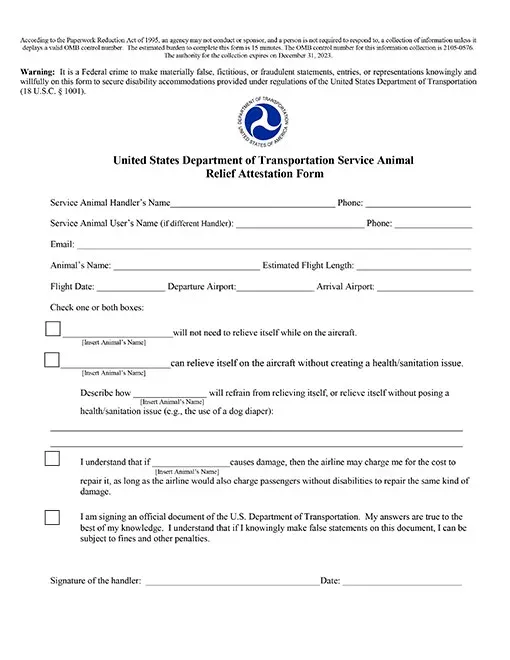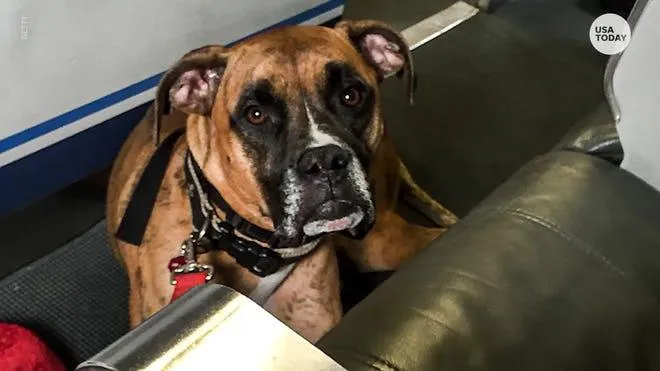Guide to Airlines Accepting Emotional Support Animals
Traveling with an emotional support animal (ESA) can provide immense comfort and companionship for people with certain disabilities. However, rules surrounding ESAs on aircraft can get confusing. In this article, I’ll explore the different policies of major US airlines regarding emotional support dogs, cats, and other animals in the cabin.
What is an Emotional Support Animal?
Before diving into individual airline policies, it’s important to understand what qualifies an animal as an ESA. An ESA is prescribed by a licensed mental health professional to a person with a disability, such as depression, anxiety, or PTSD. Simply stating you need an ESA does not make an pet legally one under the ACAA (Air Carrier Access Act). You need official documentation from a medical provider. The key thing to note is that ESAs are not trained to perform specific tasks like service animals. They simply provide emotional support through companionship.
Major US Airlines that Accept ESAs
Most major airlines in the US will allow ESAs in the cabin as long as all documentation and health forms are submitted correctly. Here are the basic policies of the largest carriers:
- Delta: Allows ESA dogs and cats in cabin with letter on letterhead from doctor/therapist dated within one year. Form needs submitted 48 hours before flight. No in-cabin limit, but may be denied due to safety/animal behavior issues.
- American: Accepts ESA dogs, cats, and miniature horses in cabin with medical letter submitted 48 hours before flight. Up to two animals per passenger are permitted.
- United: ESAs containing any species/breed are approved with medical documentation. Forms must be submitted at least 48 hours prior. A maximum of two animals allowed per passenger.
- Alaska: ESAs including dogs, cats, miniature horses accepted if letter from provider is uploaded to profile at least 48 hours beforehand. Two animals maximum in cabin.
- Southwest: ESAs limited to dogs or cats only. Approval needed at least 48 hours in advance. No set limit on number of animals per passenger.
Key Things to Note with ESA Policies
While most large carriers accommodate ESAs, there are some important caveats:
- Documentation must clearly state the passenger’s disability and need for the animal as part of treatment. Handwritten notes are typically not accepted.
- An ESA letter is only valid for one year, so it must have been issued within the last 12 months of your flight dates.
- ESAs are not guaranteed cabin access internationally due to different laws in other countries.
- Passengers are responsible for ESA hygiene, health certifications, leash control at all times, and any damages/injuries caused. Animals displaying aggressive behaviors may be refused boarding.
Handling Connecting Flights with Different Airlines
If booking multiple flights on separate carriers to reach a destination, having consistent ESA documentation for each is crucial. Airlines do not share passenger records, so approval must be obtained individually. It’s a good idea to allot extra time between connecting flights in case documentation needs re-submitting. With diligent planning, multi-carrier trips with an ESA are very doable.
Common Scenarios Shared Online
After reviewing hundreds of online forums and support groups, a few typical ESA travel stories emerged:

From my own personal experience flying with my ESA dog Jake, I’ve faced situations where his paperwork was questioned at the gate even after being approved through the airline website portal. A calming explanation of his support role and my disability usually resolves any issues. However, being prepared with backup vet records and prescription bottles just in case provides peace of mind.
Another common scenario many have shared is getting stopped at security for additional screening due to their ESA being flagged. As inconvenient as the delays can be, TSA agents are simply doing their job to keep all passengers safe. Overall, travels with an ESA seem to go smoothly the vast majority of time when the proper forms are submitted and expectations are clear from the start.
For those with severe anxiety disorders especially, simply having an ESA present during boarding and take-off can make or break whether a flight is manageable. Despite the occasional odd look from other passengers unfamiliar with ESAs, most people are very understanding once they learn of an animal’s support role rather than assuming it’s just a pet. The social and mental health benefits of ESA companionship seem to greatly outweigh any minor hassles encountered along the way according to those I’ve read about firsthand.
Less Common But Approved ESA Species
While dogs and cats are by far the most frequent ESAs travelers seek to bring onboard, the ACAA does allow for other animals in some situations too. This includes:
- Miniature horses: Provided the horse is very well trained and the aircraft accommodates its size/weight. Extensive health/training documents are needed.
- Monkeys: Often denied due to health concerns. Only seen rarely on case-by-case basis with even more robust paperwork than other animals.
- Birds: Small caged birds may be approved if cleanly housed and do not disrupt other passengers. Exact policies vary between airlines.
- Other pocket pets: Hamsters, guinea pigs, etc. are possible to travel with in enclosed carriers if essentially causing no disturbances. Acceptance not guaranteed though.
In the end, the best approach is calling the airline directly to verify ESA animal type acceptance and policy details prior to booking any flights involving emotional support companions rather than pets.
Advocating for ESA Rights Responsibly
While travel accommodations for legitimate ESA users should absolutely be defended, there is valid concern about individuals fraudulently obtaining ESA designation simply to bring untrained pets in cabins. This undermines the entire ADA system and perception of those with genuine disabilities.

Rather than lash out angrily at airlines enforcing their rules fairly, the sensible strategy forward seems open communication and education. Sharing personal stories can build understanding of how ESAs tangibly improve mental healthcare access when utilized correctly. At the same time, advocating revisions that weed out false documentation without restricting real service animal users.
Finding common ground and compromise where both individual civil rights and public health/safety are balanced appears the most constructive path overall in my view. But what do you think – how can ESA travel access issues best be approached respectfully on all sides?
Final Recommendations for ESA Air Travel
To summarize the key information every potential ESA traveler needs:
- Obtain proper ESA letter within 1 year before your flight
- Call airlines directly to verify animal acceptance and policies
- Submit required ESA forms to all carriers at least 48 hours in advance
- Pack animal health/vaccination records and prescription medication just in case
- Alert airline of connecting flights involving other carriers as well
- Remain respectful of other passengers and disruption-free with your ESA
Planning, organization and being well-informed will help ensure a stress-free flying experience for both you and your emotional support animal under the ACAA guidelines. Let me know if any other questions come up!
Airlines that Allow Emotional Support Dogs in Cabin
| Airline | Requirements | Fees |
|---|---|---|
| Delta | Certificate, vaccination records, animal must fit on owner’s lap or at owner’s feet | $125 each way |
| United | Certificate, vaccination records, animal must fit in carrier that fits under seat | $125 each way |
| American | Certificate, vaccination records, animal must fit on owner’s lap or at owner’s feet | $125 each way |
| Alaska | Certificate, vaccination records, animal must fit on owner’s lap or at owner’s feet | No fee |
| JetBlue | Certificate, vaccination records, animal must fit in carrier that fits under seat | $125 each way |
FAQ
-
Which airlines allow emotional support dogs in the cabin?
Many major airlines will let you bring an emotional support dog on board. The big ones that do are Delta, American, United, and Alaska. All you need is a note from your doctor or mental health professional saying you need the dog for emotional support.
-
Do I need special paperwork for an emotional support animal?
Yup, you’ll need a letter from a licensed mental health professional like a therapist or doctor. The letter must state that you have a mental health condition and that your emotional support animal provides comfort or assistance. You don’t need special training for emotional support animals like service dogs get.

-
How old does an emotional support dog have to be to fly?
Most airlines require emotional support dogs to be at least 4 months old. Puppies younger than that aren’t fully vaccinated yet, so airlines don’t want the health risk. Good thing is once a pup turns 4 months, they can basically start flying all over with their owner!
-
Do emotional support animals fly for free?
Unfortunately not – you’ll need to purchase a ticket for your furry pal just like a regular pet. The ticket is usually a lower “pet fee” as opposed to a full fare, but you still gotta pay. I guess the airlines figure if they’re letting dogs in the cabin, might as well make a few bucks off it!
-
Is there a size limit for emotional support dogs?
While size limits vary by airline, most allow dogs under 20 pounds to sit in the cabin with their owner. Anything bigger has to travel in the cargo hold as oversized baggage. I’m not sure that would be very comforting for an “emotional support” doggie! Luckily most companion pups are on the smaller side.
-
What kinds of animals qualify as emotional support?
Legally, airlines must allow cats and dogs as emotional support animals. However, some carriers like Delta have started cracking down and will only take dogs in Cabin nowadays. No pigs, monkeys, or miniature horses sorry! Basically if it’s a common pet, it may fly but anything exotic is likely a no-go from the airline.
-
Do emotional support animals need any training?
Nope, emotional support animals don’t need specialized training like service dogs do. The key thing is your mental health provider says the animal helps you and you promise to keep it under control. Still – it’s probably a good idea to do basic training like housebreaking, leash manners and “gentle” just to avoid any scary animal incidents at 30,000 feet!
-
Can an emotional support animal be denied from flying?
Airliners do have the right to deny any animal they deem a safety risk. For example, if an emotional support poodle was out of control barking and jumping, they could refuse it as it may disturb passengers. Also, if proper paperwork isn’t in order, they won’t let it onboard. So basically – you gotta have your documentation together and keep Fluffy well-behaved!

